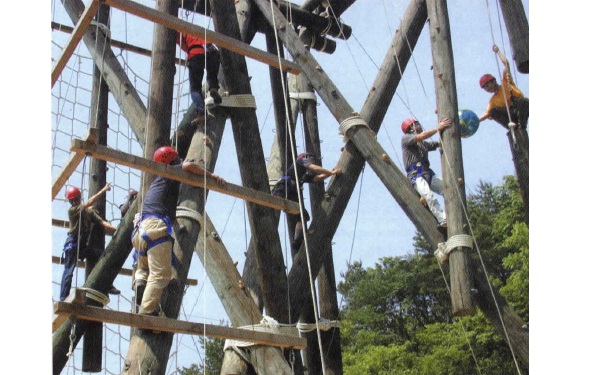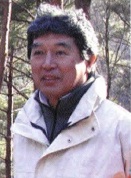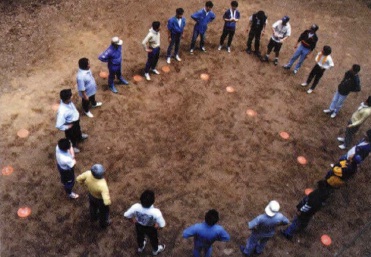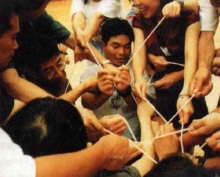by Chad Fenwick
Just a three-minute walk from the heart of Shibuya is about the last place you would expect to find an experiential outdoor training company.That is, however, where Project Adventure Japan calls home.
Changing people’s views and challenging preconceptions is nothing new for PAJ. The organization, with roots in Western adventure-based training, has tailored its approach to fit Japan, a country with a rich heritage and unique culture.
Before Toshio Hayashi founded PAJ, he had already changed the face of outdoor experiential training in Japan. As a student in Tokyo, he spent his weekends climbing in Nagano and Gunma prefectures. It was then he realized how outdoor activities challenge people to openly voice their opinions and compel them to effectively make group decisions that have real consequences.
At the time, Japan’s post-World War identity was still unclear. Activists in Japan were vehemently opposing both the war in Vietnam and the displacement of local farmers to make room for Narita Airport. In the midst of these difficult times, Hayashi saw a greater purpose for the process involved in his experiences outdoors.
Beyond merely choosing which route to take up Tanigawa-dake or Mt. Hodaka, he saw how these lessons could help people and organizations interact more smoothly and operate more effectively.
At that time, organized camps for children offered experiences, such as sleeping in tents and cooking outdoors, but generally lacked any real purpose or direction. Hayashi wanted to teach children, through the outdoors, how to approach challenging situations with clear intentions while learning to find peaceful resolutions to conflicts.
By the mid-’80s, he had created both Onogawako Lakeshore Camp in Fukushima Prefecture and Yagaikeikaku in Tokyo, enabling him to promote his vision on a grass roots and a national level. By the early ’90s this work began to expand beyond camps into schools and organizations.
Based on Project Adventure’s foundations in the U.S., Australia and New Zealand, Hayashi created Project Adventure Japan in 1995 to promote his ideas further with the benefit of an international network.
Their focus
Project Adventure’s approach is centered on ningen kankei (human relationships). They use specifically selected or developed activities to help people make discoveries and create more effective interpersonal dynamics.
Project themes
Project Adventure Japan is in schools where it works on improving group dynamics by integrating marginalized students or student groups and developing conflict management and interpersonal skills.
Within organizations and corporations, PAJ addresses employee motivation, morale, teamwork, information management and working with interpersonal relationships. Through it all a premium is placed on having fun.
The activities
Activities range from classroom exercises to outdoor experiences involving team challenges and high ropes courses. Surprisingly, the activities are not the reason “adventure” is a key word in their name.
Adam Clark of PAJ points out, “The activities themselves affect people differently. Our goal is for everyone to explore unfamiliar territory. Sometimes that is brought about by the experience of the activity, but more likely the activity just provides the setting where more meaningful discoveries about oneself or the group are made.”
Project Adventure uses a process of preparation, experience and reflection to help participants gain the most from their involvement. They intentionally create connections to the environment where the activities take place and also work with groups to help put the new skills and discoveries into immediate practice.
Case study
In a recent example, an international luxury brand wanted to improve team dynamics, particularly better support for their sales team. They needed to improve awareness throughout several divisions within the company. In order to help them understand the relationships between the departments, PAJ developed a program that included training on a high ropes course.
The climbers, representing the sales force performing under pressure, negotiated their way through tricky ropes. The belay teams, securing the climbers safety ropes and coordinating other aspects of the activity on the ground, were seen as the marketing and logistics divisions. As in real life, they supported the sales team.
During the activity, employees experienced both support and performance roles in order to increase their understanding about the nature of the relationships within the organization. After recognizing and finding answers to the problems they faced, the divisions designed solutions for the challenges at work.
Looking forward
As a result of Toshio Hayashi’s ever expanding vision, there is a lot of activity around PAJ these days. With training facilities from Okinawa to Hokkaido and thousands of people involved in PA programs each year, you can still feel the original spark from the ideas formed in the back country of Nagano and Gunma years ago.
For more information on how you, or your company, can benefit from Project Adventures programs, contact Adam Clark at [email protected] or call 3406-8804.
External Link:
Project Adventure Japan












